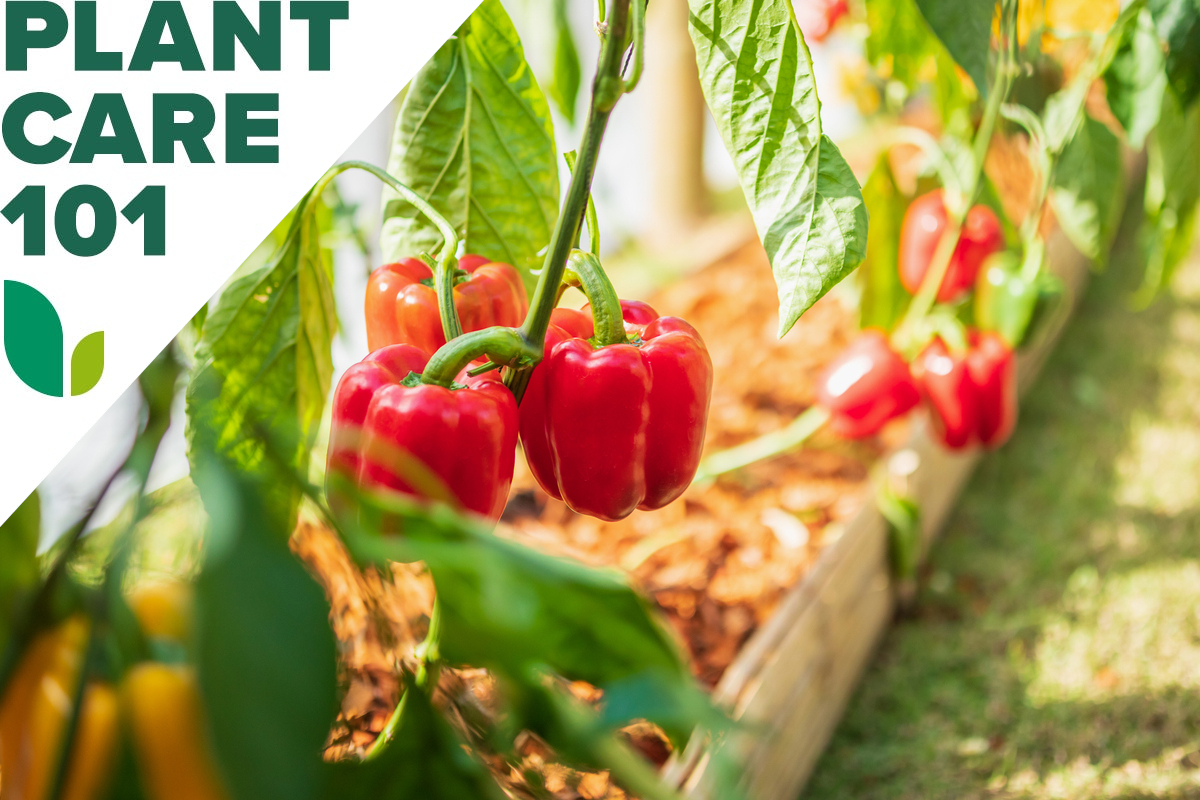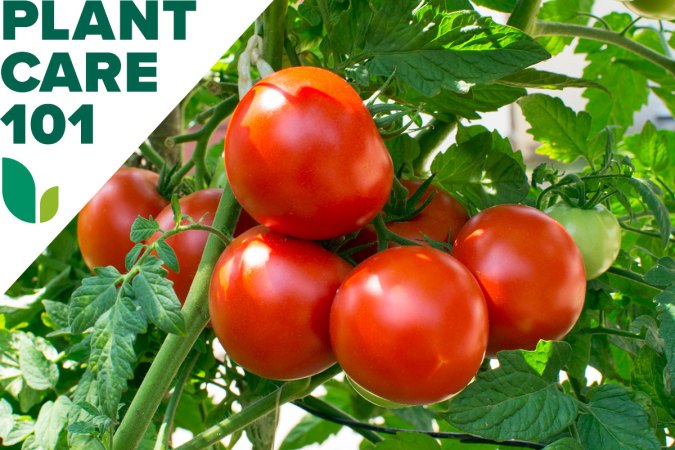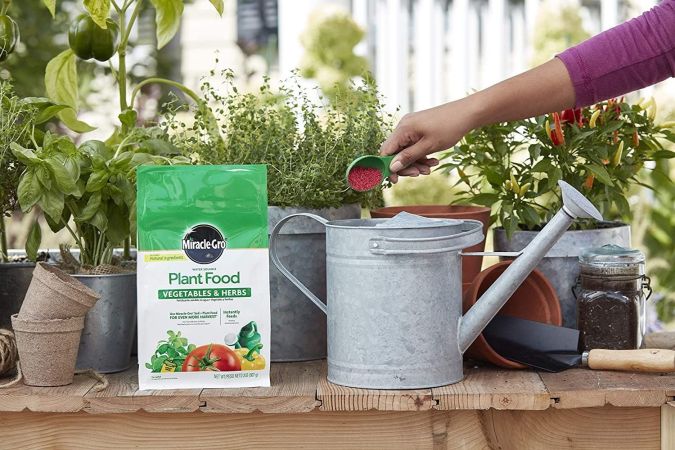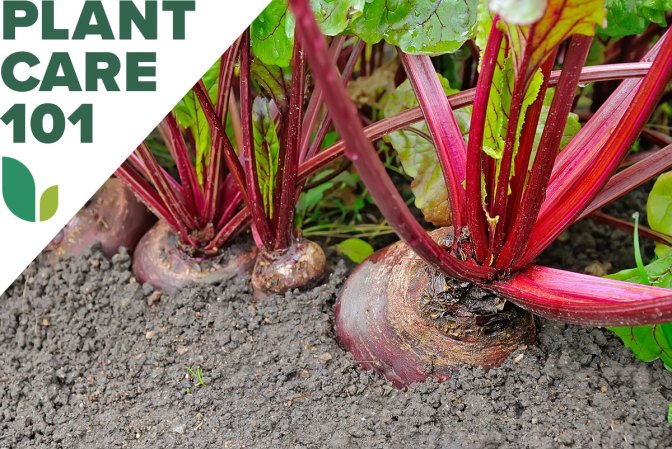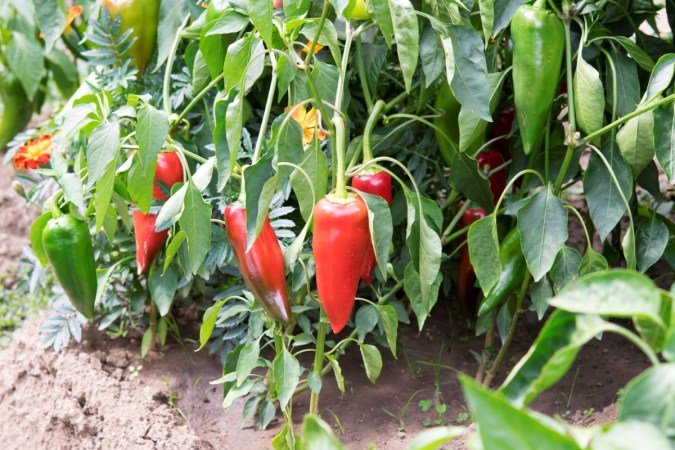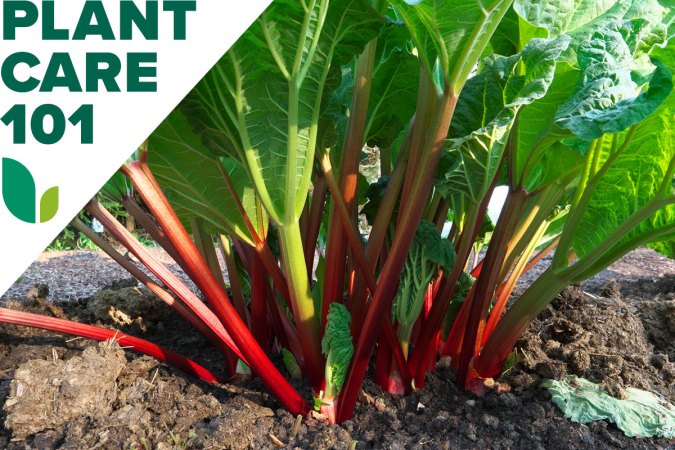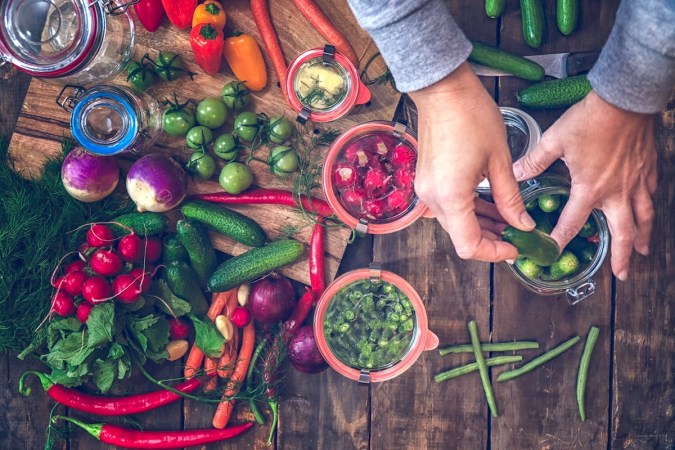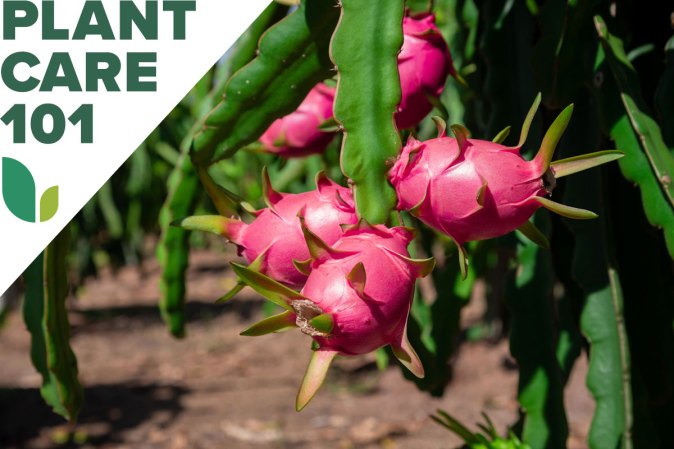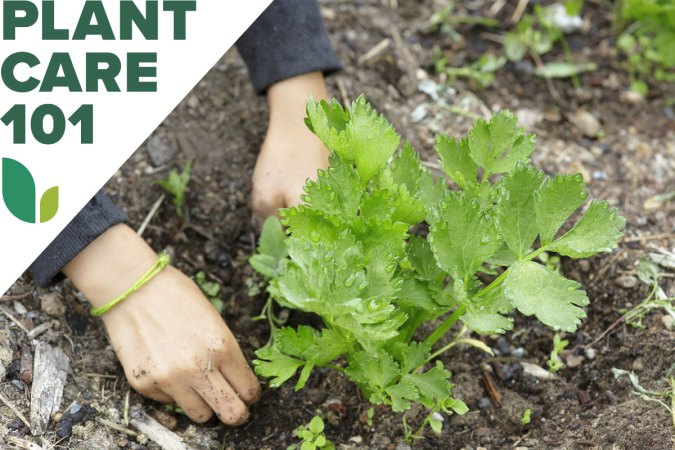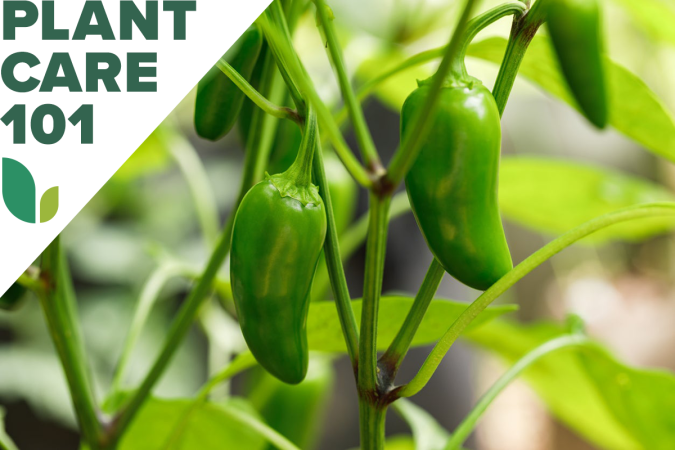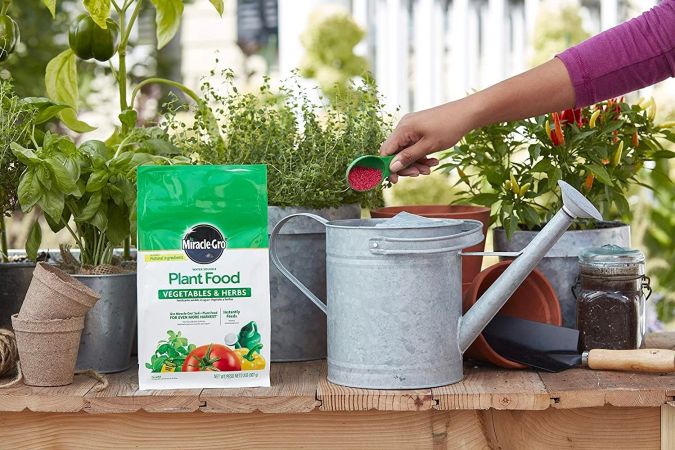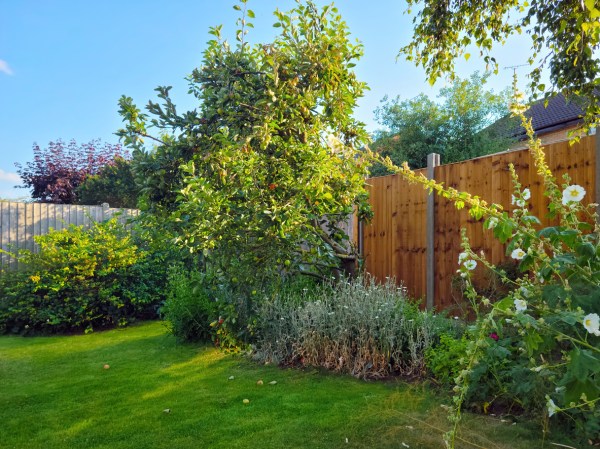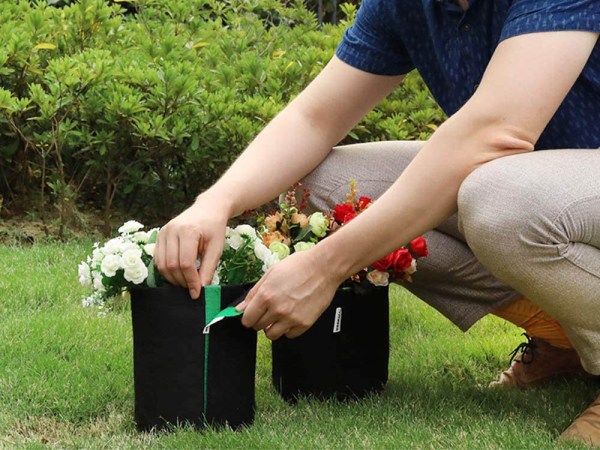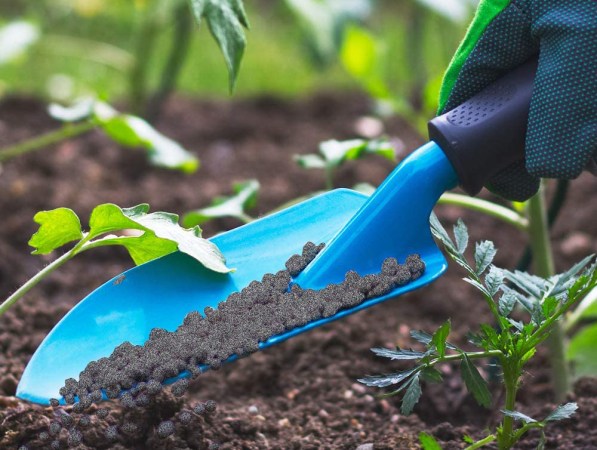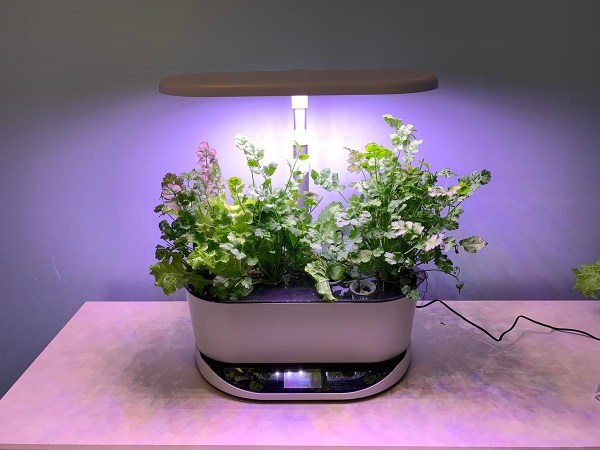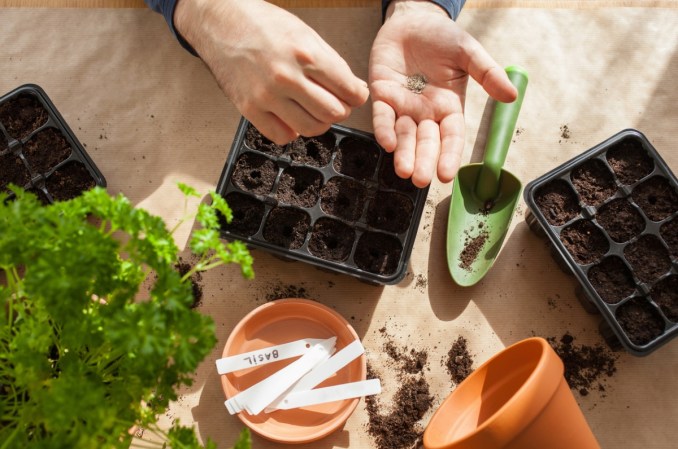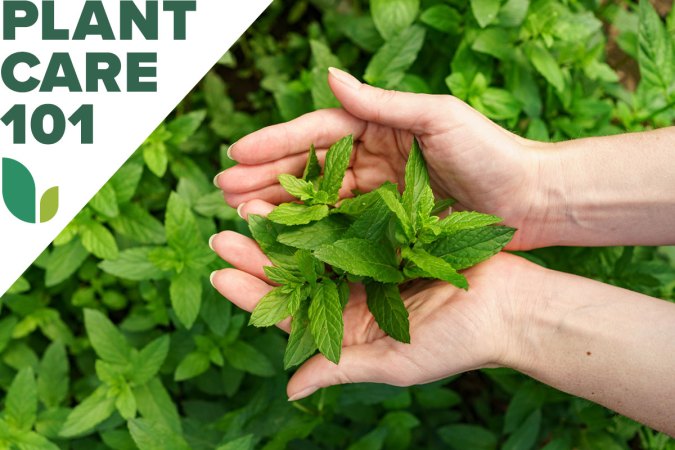We may earn revenue from the products available on this page and participate in affiliate programs. Learn More ›
Bell peppers are members of the nightshade (Solanaceae) family, along with tomatoes and potatoes, and are native to Central and South America. Of all the pepper varieties, bell peppers are among the most popular thanks to the abundance of sweet, mild fruits that come in a rainbow of colors. Though learning how to grow bell peppers is not rocket science, it helps to have a trick or two up your sleeve when planting this garden staple.
Growing Bell Peppers at a Glance
Common Name: Bell pepper, sweet pepper
Scientific Name: Capsicum annuum (Grossum Group)
Hardiness Zone: 9 to 12 (grown as annual in all zones)
Soil: Sandy, well-draining with a pH of 6.5 to 7
Light: Full sun
Water: Regular
Food: Low-nitrogen fertilizer
Propagation: Seeds
Safety: Edible
Bell Pepper Characteristics
Typically, bell peppers are grown as summer annuals, though in frost-free areas of Zones 9 to 12 bell peppers can be perennial. Bell peppers take between 3 and 4 months to mature and require at least 6 to 8 hours of sun each day. They grow between 1 and 4 feet tall in a bush-like form.
“Bell peppers can be finicky to grow, but if you provide them with what they need, they’ll produce loads of peppers for you,” says Shelby DeVore, a horticultural expert and founder of the educational gardening and homesteading site Garden. Farm. Thrive. “Bell peppers are heavy producers and thus need a lot of water. Your bell pepper plants will grow best in soil that is consistently moist,” she says.
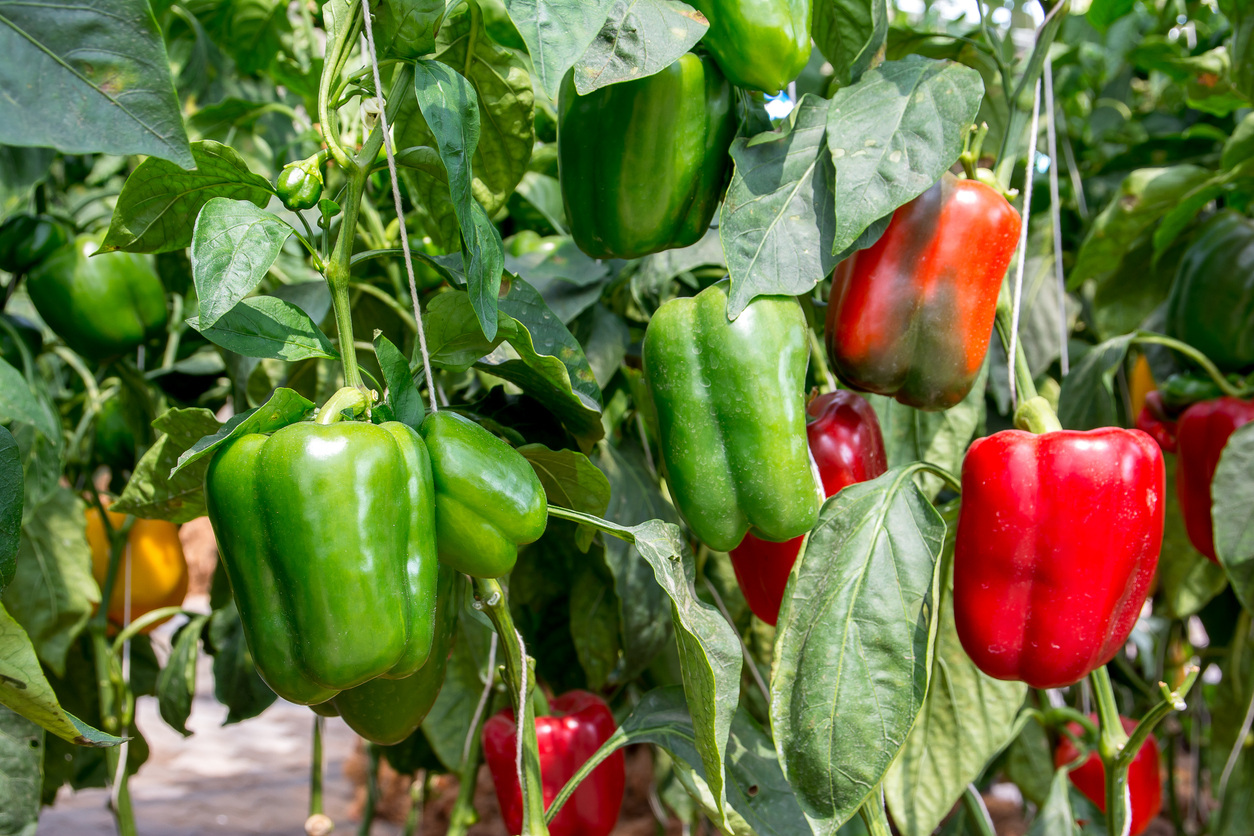
Recommended Bell Pepper Varieties
From fast growers to high yielders, there are many bell pepper cultivars to choose from. These are some of our favorites:
- Garden Leader Monster Bell: Deer- and rabbit-resistant pepper that produces massive 7.5- to 8-inch peppers.
- Sweet Candy Apple Hybrid: Medium (5-inch) fruiting sweet pepper that matures in just 71 days, which is a relatively short time for peppers.
- Sweet Carnival Pepper: Matures in 70 days; one packet includes seeds for a rainbow of fruits that start out green and then turn red, purple, orange, gold, or ivory.
- Sweet Emerald Giant: Prolific fruiting plant that yields over a long growing season (72 to 80 days).
- Grand Bell Mix: Produces a high yield of peppers that can be harvested when green or ripen to red, yellow, orange, white, purple, or brown varieties.
Propagating Bell Peppers From Seed
Similar to growing jalapenos, growing bell peppers from seed requires starting seeds indoors 8 to 10 weeks before the average date of the last frost in the growing region. Use a seed tray with a good seed soil mix or peat pellets. Keep the seeds in sunlight or under a grow light, ensuring they’re warm and well watered. Many gardeners opt for a seedling heat mat like this—the best overall pick in our buyer’s guide—to keep the seeds at 70 degrees Fahrenheit or warmer to keep peppers sprouting.
Planting Bell Pepper Seedlings
Transplant bell pepper seedlings that outgrow their starter pot or tray when they’ve produced three sets of leaves, typically about 3 or 4 weeks after planting. Pot them into a bigger container so they can continue to grow and strengthen. Transplant outdoors when daytime temperatures are in the 70s and nighttime temperatures are higher than 55 degrees Fahrenheit. Before planting them outdoors, be sure to harden off the pepper seedlings by exposing them to outdoor conditions gradually over a week or so, including wind and fluctuating temperatures.
When is the best time to plant bell peppers?
When to plant will depend on the grower’s USDA Plant Hardiness Zone. Growing peppers requires heat, so ideally peppers are planted to take advantage of the heat of summer, which usually equates to late spring.
Where can bell peppers grow?
Choose a sunny location with well-draining soil for the cultivation of bell peppers. Don’t plant bell peppers where you’ve grown tomatoes, tomatillos, potatoes, peppers, or eggplants in the past few years. This is because these plants are vulnerable to the same pests and diseases, which can still be in the soil.
How do you plant bell peppers?
Enrich the soil with compost and a fertilizer that’s best for peppers. Cover the planting area with black plastic mulch to keep the soil warm. Be sure the bell pepper seedlings have been exposed to outside elements for at least a week before planting. Spacing of pepper plants can vary by variety.
- Cut holes in the plastic (if using it) and dig planting holes several inches deeper than the container and 1.5 to 2 feet apart for optimal pepper plant spacing.
- Remove pepper plant seedlings from containers, gently massaging the roots.
- Place the plants in the holes, filling in with enriched soil around the base of the plant to cover just under a third of the stem. Pack the soil gently to help keep the pepper seedling in place.
- Water thoroughly.
Before peppers grow too big, it’s wise to think about structural support. “Use a small stake or piece of bamboo in the middle of your bell peppers to hold them up,” advises Kelsey Patterson, a gardener and food blogger at Sigsbee Street. “You will want to use twist ties on the main stem to hold it to the stake. Doing this will keep the plant from being weighed down by the heavy fruit.”
Can you grow bell peppers in containers?
Growing bell peppers in pots is not only possible, it can be preferable for some gardeners.
“Bell peppers can do well in containers if you keep a few things in mind,” says Rebecca Sears, chief marketing officer and resident green thumb at Ferry-Morse. “First, plant a single plant in the biggest pot you can find, at least 14 inches in diameter, in a light, well-draining potting mix so that the roots have the aeration they need,” she says.
“Second, be sure to keep up with fertilization and consistent watering throughout the season. Container plants dry out more quickly than those that are planted in the ground, so monitoring for moisture is important, especially when the weather gets hotter. You may need to water every day in the height of the summer,” says Sears.
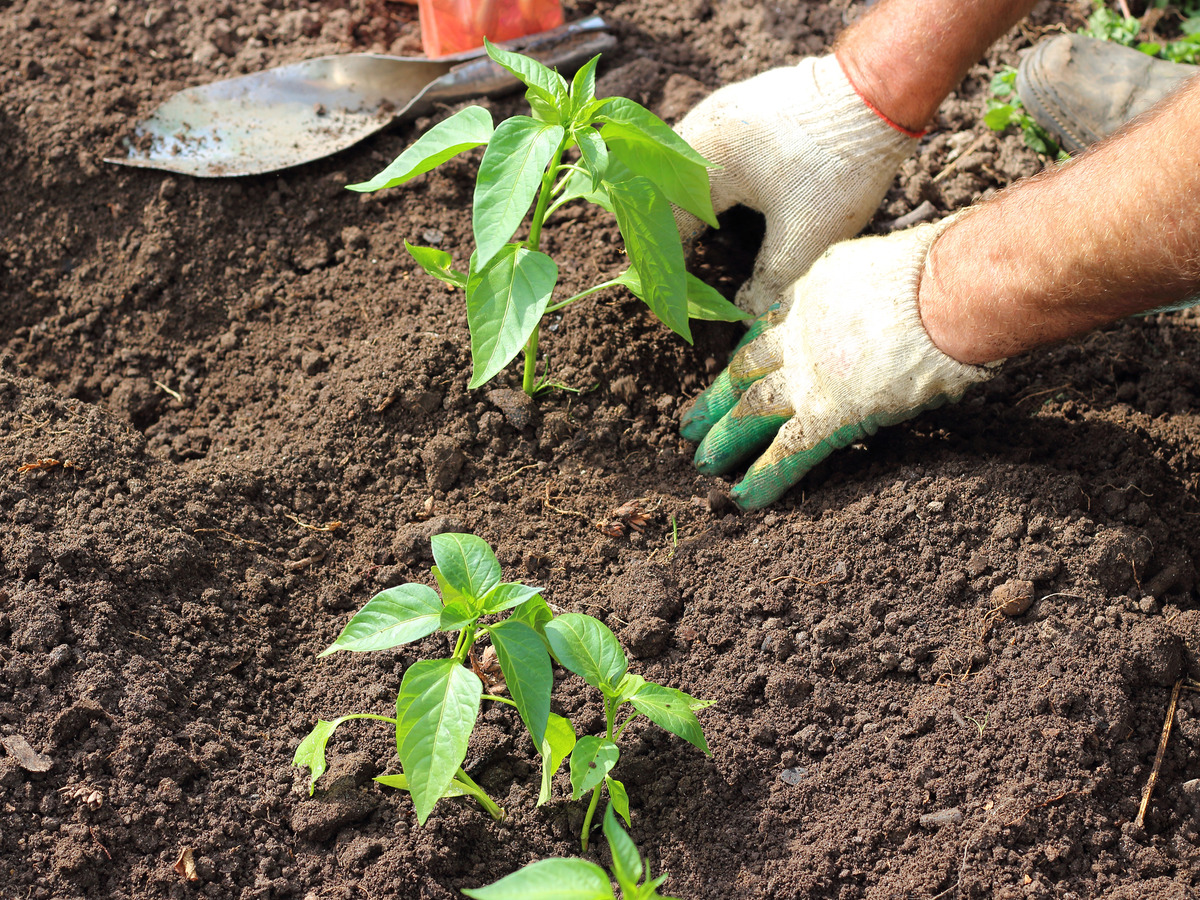
Watering Bell Peppers
A general rule of thumb for peppers is to give 1 inch of water per week. Overwatering can lead to root rot, so aim for watering with soaker hoses or drip irrigation. If the black plastic mulch is surrounding the plants, be sure that the soaker hose or drip irrigation sits at the base of the plant.
“Soil inside of containers tends to hold moisture longer, which is helpful with heavy-drinking plants like bell peppers,” DeVore says. “Make sure that the bottom of your container has drainage holes to allow excess moisture to drain out. Check the soil daily to ensure it feels like a wrung-out, damp kitchen sponge. Water as needed.”
Fertilizing Bell Pepper Plants
Look for an organic fertilizer that contains more potassium or phosphorus than nitrogen, such as tomato fertilizers. The increased potassium or phosphorus encourages blossom and vegetable production. Follow the guidelines on the fertilizer label, although many gardeners find peppers do best if fertilized at least twice more during the growing season and more if growing in containers. The University of Illinois Extension recommends fertilizing once after the first fruits have set.
Pollination
Peppers are self-pollinating; however, many cross-pollinate thanks to busy bees and other pollinators. Peppers also benefit from wind or agitation to release pollen. This can be done by hand by giving the backs of blooms a gentle tap, but it’s generally not necessary.
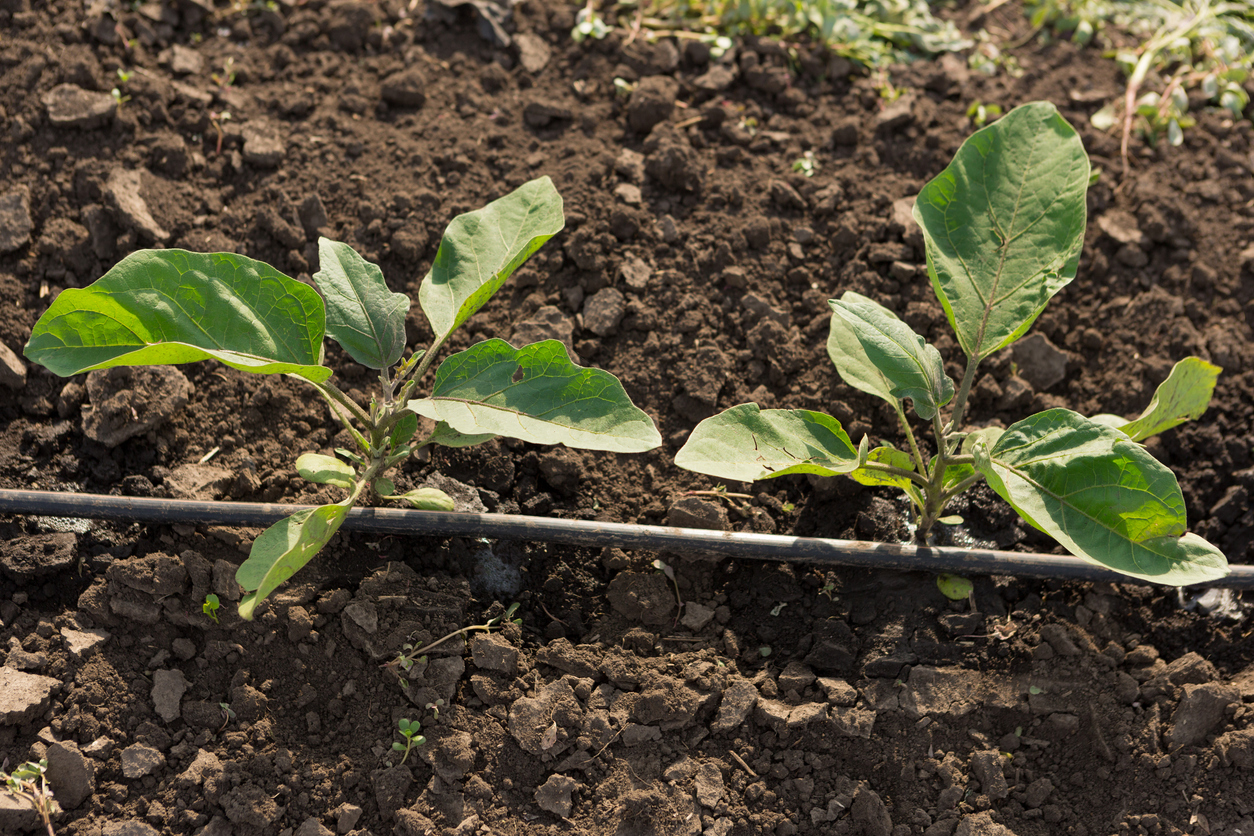
Pruning Bell Pepper Plants
Pruning bell peppers is an important step to keeping plants healthy. The University of Illinois Extension recommends pruning only during the establishment phase (early growth in the ground) of peppers using a method called topping. Topping is the process of pinching off the top-most leaves, flowers, fruits, and stem. This helps encourage a stronger plant and more flowers and fruit. Do this when plants have reached about 12 inches high.
Safety Considerations
Peppers are edible and safe for human consumption. Generally, the fruit of bell peppers and sweet peppers is nontoxic to pets such as dogs and cats, but the leaves, stems, and unripened fruit of pepper plants contain alkaloids that can be toxic to pets.
Potential Pests and Diseases
Common diseases affecting pepper plants include mosaic viruses, root and crown rot, powdery mildew, curly top, spotted wilt virus, and Verticillium wilt. Peppers are also susceptible to common garden pests such as aphids, whiteflies, thrips, and spider mites. Other pests include armyworms, cucumber beetles, leaf miners, weevils, and more.
Fruits can sunburn if not protected by shade from the leaves. Peppers can get blossom-end rot, which is a lack of calcium in the fruit. However, this disease is usually brought on by inconsistent watering. Peppers that don’t get consistent enough heat will not grow or fruit, and blossoms may drop off. Growing peppers indoors during cold snaps may be a temporary solution.
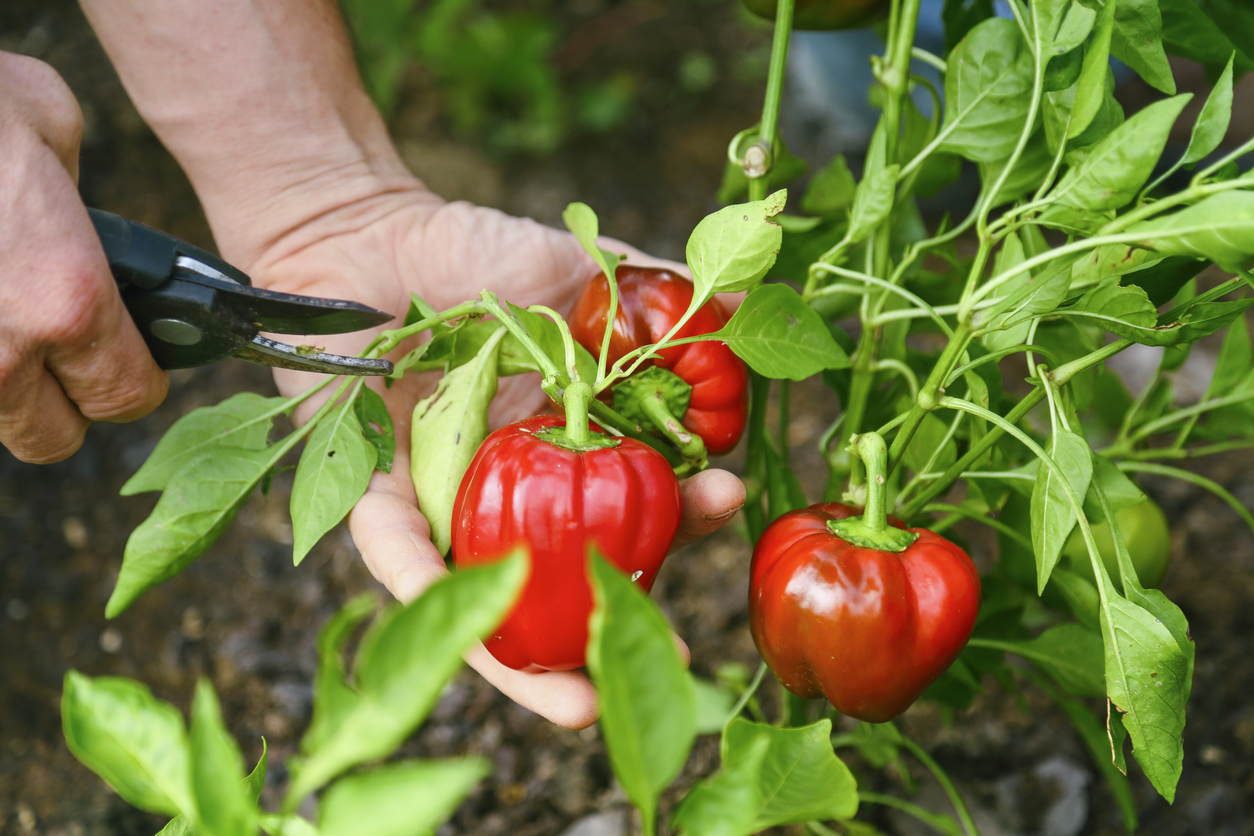
Harvesting Bell Peppers
The color and ripeness of a bell pepper at harvest depends on the variety and how long the fruit stays on the plant. All varieties will be green at first, with some turning red, yellow, or a range of other colors, including ivory or deep purple. Harvest the rainbow of peppers when they feel firm and are either a deep green (if they are a green variety) or have fully changed to the color indicated by their variety.
When is the best time to harvest bell peppers?
Bell pepper seedlings take anywhere from 60 to 90 days to mature, so harvest fruits according to the color and size they should grow. If possible, harvest fruits early in the morning before peak heat sets in.
How do you harvest bell peppers?
Peppers can be harvested just as you’re ready to use them, or they can be harvested before full ripeness and allowed to ripen on the counter.
- Use sharp garden shears or clean scissors to avoid damaging the plant.
- Gently snip the pepper stem, leaving about ½ inch above the pepper cap.
How do you store bell peppers?
Peppers can be stored in the refrigerator at about 40 degrees Fahrenheit in a plastic bag with some holes for circulation. Once cut, bell peppers can be wrapped in a paper towel to absorb moisture and placed in a sealed container.
Preparing Pepper Plants for Winter
Most gardeners simply replant peppers each year; however, some choose to overwinter pepper plants indoors. Repot pepper plants in fresh potting soil, prune them, and bring the containers into a warm room with direct sunlight. In areas with mild winters where temperatures don’t dip below 60 degrees Fahrenheit, peppers can be left in the garden to go dormant.
Looking for more edible plants to grow and harvest at home? Check out our guides on growing squash, cucumbers, and beets.

